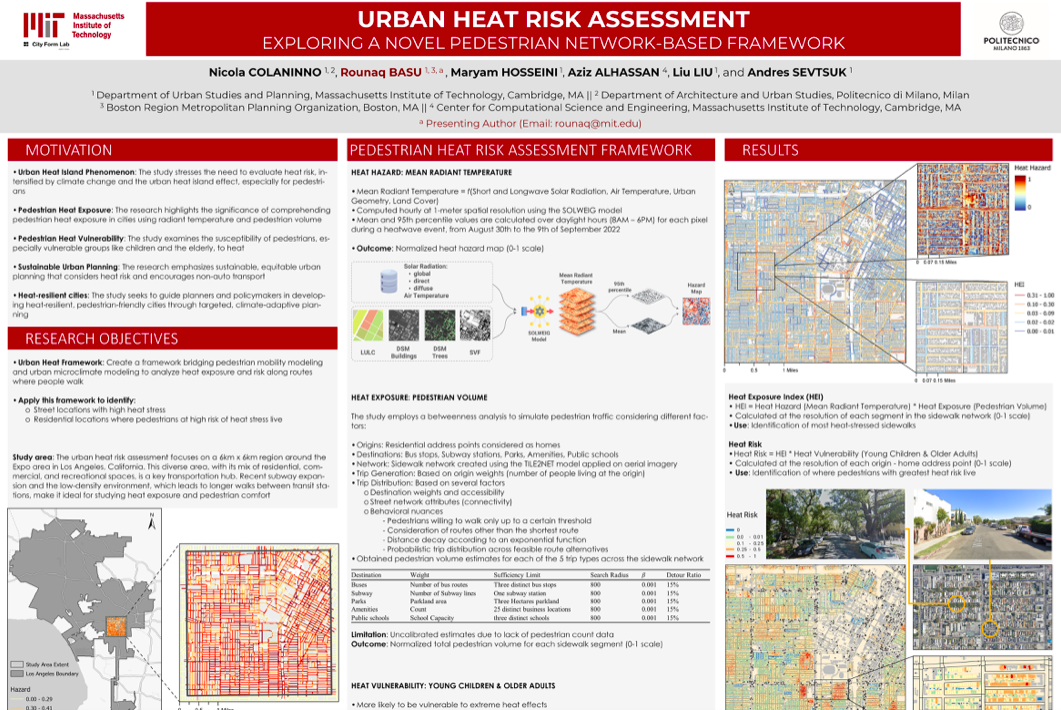Urban Heat Risk Assessment: Exploring a Novel Pedestrian Network-Based Framework
Year: 2024
Published in: Politecnico di Milano

This study introduces a novel framework to assess pedestrian heat-related exposure and risk in urban areas by integrating mean radiant temperature as a hazard, pedestrian flows as exposure, and vulnerability. We produce two key outcomes: (1) a heatmap of urban areas prone to higher risks, considering different origin-destination pairs, and (2) a street-level heat exposure index for each segment of the pedestrian network, combining mean radiant temperature and foot traffic. Our approach allows for a comprehensive heat risk assessment along walking routes, providing detailed insights into potential pedestrian heat risks. The findings offer valuable information to urban planners and policymakers, supporting evidence-based adaptation strategies and policy decisions essential for climate-proof planning. Identifying at-risk areas and evaluating heat exposure on sidewalks is a crucial foundation for developing effective strategies to mitigate the adverse effects of heat-related risks on urban populations. By implementing targeted interventions and urban design improvements, cities can enhance outdoor comfort and create heat-resilient, pedestrian-friendly environments, prioritizing the health and wellbeing of vulnerable groups like children and the elderly. Our pedestrian network-based approach enables a more precise assessment of outdoor spaces and pedestrians’ well-being, empowering policymakers and planners to identify priority areas for interventions and allocate resources more effectively during extreme heat events. This research contributes to the growing knowledge of robust risk assessment methodologies for climate-proof planning, specifically addressing outdoor heat-related risks during extreme heat events in cities.